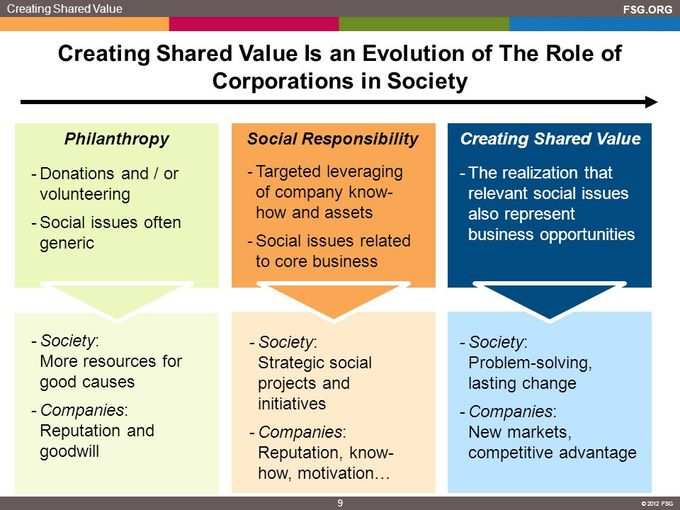 If Indian companies were to start identifying the socio-environmental problems that intersect with their business, and begin addressing them as potential business opportunities, it would not only help them make more profitable businesses out of this approach, but at the same time contribute to making the society become a better place to live in. As ideal as it may sound, senior
If Indian companies were to start identifying the socio-environmental problems that intersect with their business, and begin addressing them as potential business opportunities, it would not only help them make more profitable businesses out of this approach, but at the same time contribute to making the society become a better place to live in. As ideal as it may sound, senior Defining this concept in 2011 Harvard Review article as “Creating Shared Value”, professors Michael E Porter and Mark R Kramer advice companies to find the synergy or overlap between a successful business and a successful society. Yes, it sounds good in theory, but many do not understand how it can be brought into practice. Here’s how:
The first is to reconceive products or the markets they serve. One can begin by creating products that address social and environmental issues or by expanding into new markets to sell its products or services. Significantly, Shared value can become a lot easier if both are done simultaneously. Say for example, if there is a drug store company that is present in several locations where there aren’t enough grocery stores. Even as you won’t have thought of selling food but you can see there is untapped demand for it in your region, and since people don’t have access to grocery stores, they may not have access to healthy food at all. Lack of nutrition is a potential social problem in this region in such a situation. As a retail company, you can create a section of your stores that can sell food products high in nutritional value. By way of this, you are tapping the pent-up demand and giving people a reason to come to your store. If you succeed in this, you have created good new products and solved a social problem of nutrition while also tapping an untapped market that wasn’t being served by grocers earlier.
The second option is for companies to redefine productivity in their value chain. For example, you are a coffee importer. You buy from coffee farmers who need tools, know-how and access to money or capital to improve their productivity. If you can improve their productivity, you can decrease cost for yourself. So you could offer farmers a long term contract providing them assurance that you will buy from them if they make investments in the farms. As part of the agreement, you can provide them training and access to the latest farm techniques and technologies. It will decrease your cost and provides you stable access to coffee products. Porter and Kramer say that to increase productivity, energy use and logistics, use of resources, procurement policies, distribution, employee productivity and location are important factors that need be considered.
The third way is for companies to build supportive industry clusters. So instead of selfishly focusing on having a major chunk of the pie, the focus is on enlarging the pie so that everyone gets larger chunks. So, like in the
Mark Kramer simplifies it for us: “When you have found a way to sell new products to low income population in emerging markets (smaller portions, informal distribution system etc), you are reaching a new market. When you have found a way to differentiate your product by let’s say, increasing its nutritional value or lowering fats and sugar, that is